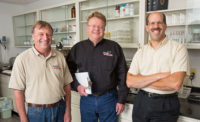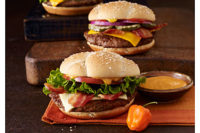Our Way includes five elements, around which every strategy and goal is intertwined: Our People, Our Process, Our Products, Our Performance and Our Principles. What follows is a brief Q&A with chairman and CEO Jeffrey Ettinger and Julie Craven, vice president of corporate communications, about the program.
NP: What does Hormel’s “Our Way” initiative bring to the table as far as future success for the company is concerned?
Ettinger: The team that came up with Our Way as that communication vehicle, I think did a very nice job of capturing what’s important to our company: the people, processes, products, performance and principles, and how they interrelate with each other. We take advantage as often as we can now to use this as the communication touchpoint in videos, training manuals, plant-specific information. It has coincided with the corporate responsibility report, and it really allows us to highlight that as an important area in and of itself. It’s a restatement, if you will, of some of the common principles our company has lived by for a long time, but it’s a good device for getting those principles across. The other thing Our Way provides is, [it] is an effective way of allowing [a corporate] entity to run independently for its business purposes or to go to market while understanding that the values have to be consistent with the parent company. There is an umbrella element to Our Way that is used in all the entities. And the timing again has been great, as we’ve been much more active in acquisitions in this decade than we had been prior, so there’s that enhanced need to have a framework to handle those.
NP: Who and/or what spurred the idea along and was a major factor in its development?
Craven: It started with Jeff from the standpoint that he challenged a cross-functional group of about 16 of us to come up with a new vision and mission statement shortly after he took over. … It’s been interesting to see the subsidiaries, in particular, pick it up, because Farmer John’s has changed all of its materials to match. Jennie-O Turkey Store has as well. So it has a nice umbrella effect to sort of simplify it and get those same messages out on the vision and mission.
Ettinger: The pictorial aspect of it is useful in this day and age as you deal with people with multiple language backgrounds, in that the more you can have a communication device that isn’t five sheets of densely packed copy, the better. Just like in the magazine business, where they communicate as much from the visuals as they do from the text, this was a really good opportunity to kind of encompass both.
NP: In the short period of time that it’s been in the works, what have you seen that works well in terms of “Our Way,” and what has proven to be more of a challenge than expected?
Ettinger: I wouldn’t call it a challenge, but in terms of the full rollout and incorporating it into our continuous improvement process, it’s just a gradual effect. Anytime you’re trying to ultimately train or expose 19,000 people to something — even new packaging — you have to do it on a gradual basis. We’re at certain stages with some parts of the company but kind of at the beginning of the path with other parts — but we understood that and we’ll get there within a reasonable period of time.






